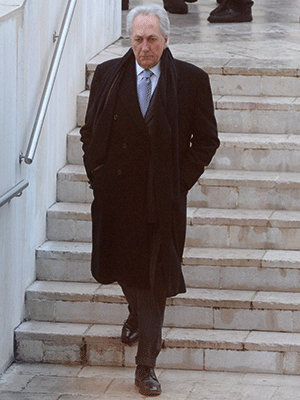On January 2, the European Central Bank (ECB) appointed three temporary administrators and a three-member surveillance committee to take charge of Banca Carige, the troubled Genoese lender, following the resignations of a majority of the members of its board of directors, including chairman Pietro Modiano and chief executive Fabio Innocenzi.
The ECB describes the move as “an early intervention measure”. It comes amid the continuing fallout from a shareholders meeting on December 22 which failed to approve a €400 million capital raising that the ECB had required to stabilize the bank before the end of 2018.
Investors have been following the Italian bank’s struggles with alarm, since it was shut out of the subordinated debt markets last year as it strove to meet regulatory capital requirements.
Investors were relieved in November 2018 when the management board of the voluntary intervention scheme of the Italian interbank deposit protection fund (FITD) proposed that member banks underwrite €320 million of subordinated tier-2 bonds to restore Banca Carige’s capital ratios. It was a bailout, of course, but not a state bailout.
“It’s a good outcome for the Italian banking system,” Gildas Surry, portfolio manager at Axiom Alternative Investments – which runs $1.4 billion across European financials subordinated debt and capital instruments – told Euromoney at the time.
But relief was only temporary as the bank still needed to find an acquirer or raise equity, as markets worried about potential losses at Italian banks from government bond holdings amid the budget showdown between the new Italian government and the EU.
|
Vittorio Malacalza |
On the eve of the shareholders’ meeting just before Christmas, Moody’s downgraded Carige’s baseline credit assessment to Ca from Caa2 on the grounds that taking support from the banking system’s voluntary intervention scheme while pursuing strategic alliances only underlined the bank’s need for external support to secure its viability.
The resignation of the majority of the board following the surprise decision not to approve a share capital increase – the bank’s biggest shareholder, the Malacalza family, reportedly abstained – made the installation of temporary administration necessary to stabilize Carige’s governance and pursue effective solutions for ensuring stability, in the ECB’s view.
The ECB immediately re-appointed former chairman Pietro Modiano, and former chief executive Fabio Innocenzi as temporary administrators along with Raffaele Lener, a lawyer with experience of arbitration at the Bank of Italy and at market regulator, Consob.
The ECB also appointed Gianluca Brancadoro, Andrea Guaccero and Alessandro Zanotti as members of the surveillance committee of Banca Carige.
Temporary administrators are tasked with safeguarding the stability of a bank while continuously reporting to the ECB.
According to a statement from Carige on Wednesday, the first steps to be taken by the new management will include starting discussions about the tier-2 bond with the Voluntary Intervention Scheme (VIS) of the FITD, “in order for the bank’s capital strengthening activities to continue”.
However, it’s hard to see the VIS rushing to exchange the subordinated bonds into equity, with Carige’s shares down over 80% in the last 12 months and suspended following the appointment of administrators.
When that tier-2 deal was provided back in November, it looked like an intermediate step in recapitalizing the bank, with a clause suggesting that partial or full repayment would come from the equity raise expected to be approved on December 22.
Having stumbled at that final leg of its recapitalization, the bank still needs to find a buyer. Its market cap is little more than €84 million. It’s a small bank making big headlines because it has become a proxy for bigger concerns about Italian and European banks.


 Signal2forex.com - Best Forex robots and signals
Signal2forex.com - Best Forex robots and signals




